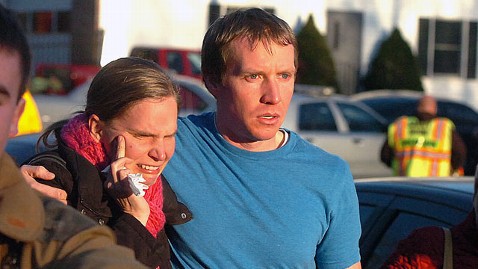From bigger screens and better cameras to multicore processing and NFC, 2012 has been a momentous year for fancy new phone technology. But how practical is any of this cutting-edge gear? Read on as we dive into the gee-whizzery this year's smartphones brought to the table and whether they were huge flops or represent fabulous mobile innovations.
Big, HD screens
It seems that these days a superphone isn't truly super unless its display is larger than 4.3 inches. Sure, this trend of steadily swelling screens has been with us for years, but it really took off in 2012. Indeed, the hottest handsets of the year all sport beefed-up displays with even higher pixel counts for sharp HD resolutions.
Notable devices include the Samsung Galaxy S3 (4.8-inch screen, 1,280x720-pixel resolution) and
Galaxy Note 2 (5.5-inch screen, 1,280x720-pixel resolution), the HTC Droid DNA (5-inch screen, 1,920x1,080-pixel resolution) and One X+ (4.7-inch screen, 1,280x720-pixel), plus in Motorola's refreshed Droid line, the Droid Razr HD and Droid
Razr Maxx HD (both 4.7-inch, 1,280x720-pixel resolution). Heck, even the relatively tiny iPhone 5 flaunts a larger 4-inch screen.
Verdict: winner
While some may prefer smaller and more compact handsets, phones with large screens are here to stay. The success of Samsung's gargantuan Galaxy Note 2, stylus or not, is further proof that strong consumer demand exists for a smartphone of almost tabletesque dimensions. Their cravings make sense since while a handset with an oversized display is harder to grip one-handed, everything from movies and games to ordinary Web sites and apps becomes more engaging on a big mobile screen.
Quad-core processors
Remember when dual-core processors were the pinnacle of smartphone processing power? Back in 2010, the international LG Optimus G2X handset wowed
Android fans with its Nvidia Tegra 2 dual-core chip. In spring of 2011, the American version of the device, the T-Mobile G2X, hit U.S. shores and became the first phone sold stateside running two computing cores.
My, times have changed. This year ushered in the era of quad-core mobile CPUs, first overseas with global models of the LG Optimus G, HTC One X, and Samsung Galaxy S3. Next came U.S. versions of the Optimus G on both AT&T and Sprint, the HTC One X+ (AT&T), and the LG Nexus 4.
Verdict: winner
I don't doubt that there are many phone users who question the need for devices with four discrete processing cores. In my view, though, since many of today's and certainly tomorrow's flagship handsets already have this technology, avoiding quad-core won't be easy. Sure, you can opt for a lower end midrange device, but chances are you'll miss out on the newest versions of Android in the process. The speed of quad-core smartphones is also not a fable, they really are much faster than their dual-core brethren.
NFC
Ever since the Google Wallet mobile payment service debuted last year, NFC (Near Field Communication) has been described as a technology on the cusp of gaining mass-market adoption. Unfortunately, Google's ambitious point-of-sale plans have stagnated, with few actual retailers supporting the service.
This year other proponents of NFC did their best to tout the convenience of the technology, which is also able to perform neat tricks like transferring pictures, video, and business cards just by bumping phones together. There's Samsung S Beam on the Galaxy S3, Sammy's spin on Google's Android Beam feature that came with Android 4.0 Ice Cream Sandwich in late 2011. Sony's Bond phone, the Xperia TL, uses NFC to read "Smart Tags" and automatically command the device to launch preset apps and toggle particular settings. My favorite though is Nokia's freshly launched Windows Phone 8 handsets, the Lumia 920 and Lumia 820, which use NFC to enable swift and easy Bluetooth pairing with accessories such as speakers and headphones.
Verdict: loser
I'm sorry, but despite all the hype NFC never developed into anything beyond buzz. Google Wallet certainly was a letdown but sadly so were NFC's other abilities. I have yet to observe anyone in the real world, outside of a press conference or vendor demo, actually use NFC. Also, those fancy wireless headsets an speakers Nokia showcases on its Web site with NFC tech seem like slick vaporware -- at least in the U.S. I sadly can't find them for sale anywhere.
Bluetooth 4.0
In 2011, Bluetooth 4.0 wireless first hit the mobile scene, finding its way into the iPhone 4S and the popular Motorola Droid Razr handsets. Since then all the big smartphone hits, including the Samsung Galaxy S3 and HTC One series handsets, just to name a few, feature the technology. At the core of version 4.0 is that devices can use it to talk to other gadgets without consuming much power. Conceivable applications for this include fitness and medical sensors that last for years, not days.
Verdict: loser
OK, this was a close one to call since I strongly believe in Bluetooth 4.0 and its potential benefits. Unfortunately, while its promise seems bright, 2012 wasn't quite the year for Bluetooth 4.0 to shine. The number of actual sensor-style products that use the Bluetooth 4.0 low-energy feature is small. Currently the most high-profile accessories to harness Bluetooth 4.0 are the Fitbit Zip and Fitbit One. Perhaps 2013 will prove more kind to the emerging technology.
Wireless charging
The Powermat wireless-charging products first made the notion of wireless charging cool, but until this year the slick mobile technology remained merely an expensive add-on. Also, outside of products offered by third-party manufacturers, wireless charging was a capability no phones natively supported.
Verdict: winner
What will really transform wireless charging technology from neat parlor trick to useful tool is the Qi wireless standard. This year a number of flagship smartphones support the Qi protocol for inductive charging right out of the box. These include the HTC Droid DNA, Nokia Lumia 920, Nokia Lumia 820, and LG Nexus 4. Products such as the Energizer Dual Inductive Charger already offer wireless charging for these Qi devices.
Phone cameras
It used to be the case that pictures taken with phone cameras were blurry, pixelated messes. Either that or phones struggled mightily under low-light conditions. All that changed in big way in 2012.
Verdict: winner
From HTC's One series and the Evo 4G LTE to the Samsung Galaxy S3, Android handsets gained great camera prowess this year. All these phones offer dedicated imaging-processing hardware, improved lenses, and special shooting modes such as HDR, burst, and panorama. Android 4.2 Jelly Bean also added the option to snap images while shooting video, plus a 360-degree panorama function.
Battery life
Even the most sophisticated smartphone becomes a fancy paperweight when its battery dies. Android devices have been particularly notorious for short runtime. Thankfully 2012 proved to be a banner year for battery performance.
Verdict: winner
In early 2012 Motorola unleashed its Droid Razr Maxx handset, which notably came equipped with a massive 3,300mAh battery. That was enough to help the device last for almost 20 hours in the CNET Labs video playback battery drain test. Moto followed up later with the Droid Razr Maxx HD, which boasted the same large battery plus an HD-resolution screen.





















